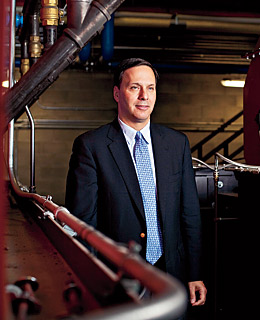
Ronald Liebowitz
A few years ago, when a group of environmentally active students and faculty proposed that Middlebury drastically cut its carbon emissions, president Ronald Liebowitz could have easily ignored them. Middlebury, like other schools, was enduring an era of tight budgets, and it's not as if the leafy liberal-arts school in upstate Vermont (enrollment 2,400) had an enormous carbon footprint. Instead Liebowitz took their proposal and shoved it forward, helping them convince a skeptical board of trustees that going green was the right decision for Middlebury. That advocacy has paid off. Today Middlebury is considered one of the greenest schools in the U.S. Liebowitz has pledged to make the college carbon-neutral by 2016, and Middlebury is well on its way. Earlier this year, the school opened a $12 million biomass-gasification plant that uses wood chips from nearby forests and mills. The plant has already cut Middlebury's carbon footprint 40% and reduced fuel costs. But Liebowitz believes the real benefit of going green transcends the bottom line. "This is one of the highest priorities for the country," he says. "It's key for colleges to take the lead and push the envelope. We need to give something back to society." That attitude has put Middlebury at the head of the pack. —Bryan Walsh